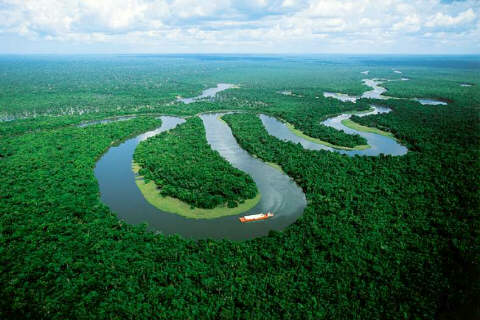by Larry
July, 2012The Amazing Amazon BasinYet this is merely part of the vast Amazon Basin. Its rainforest contains a fourth of the world's primates, half its bird species, and hundreds of kinds of butterflies. In only 25 of the Amazon's rainforest acres there are over 300 types of trees. The Amazon Basin encompasses 1.7 billion acres (only a little less than the land area - 1.9 billion acres - of the lower 48 United States). Its average annual rainfall is over 120 inches (10 feet). This region of the world encompasses some rather unique and intriguing wildlife. There are pink, fresh water dolphins, flesh-eating swarms of piranha fish, anacondas that reach 20 or so feet in length, capybaras (the largest rodents on earth), vampire bats, jaguars, spider monkeys, caiman (a species of crocodile), sloths, toucans, macaws, and noisy, colorful parrots, to mention a few.
On a larger scale, whether or not we believe it is due to human activity, global warming is having a large impact as well. As oceans heat up, the poles and mountain ranges lose more ice, and the balance of atmospheric currents is altered, weather patterns will shift. Regions like the Amazon Basin, which have tended to receive immense amounts of precipitation or mountain snow melt year in and year out, may no longer have such reliable moisture. It would be interesting to be able to see in the next several decades the effects of such modifications. Speculation is that from a fourth to half the known species may be at risk as rainforests disappear. Many of the world's as yet unidentified species are dying every year and will continue to do so. The biosphere of that future might be a rather alien and relatively desolate realm to those of us who have enjoyed the bounty of fauna and flora that prospered in the world of our births. In a more positive light, significant developments are occurring with Amazon Basin eco-tourism and efforts to salvage all that can be learned in what time is left about the marvels still hidden there, not known or fully understood, which may have valuable applications in pharmacology, medicine, ecology, agriculture, and so on. |
